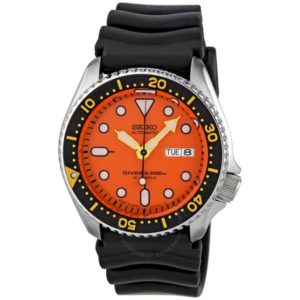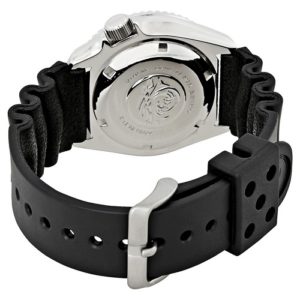Debunking the Myths About Diving Watches
Debunking the Myths About the Dive Watch
Ever since we’ve been able to acquire the Seiko range, we’ve had a tonne of questions about what the diving watches can and can’t do. That’s why I decided to research the most common myths and misconceptions. I was almost fooled by a few of these, so I hope this article will prove useful to you, especially if you want to buy a diving watch.
First up is probably the most common (and the most dangerous) myth about the bezel, that the rotating bezel will help you track your remaining oxygen level. Now, this particular piece of misinformation was actually in a recent press release about diving watches! Let’s see where it’s wrong...
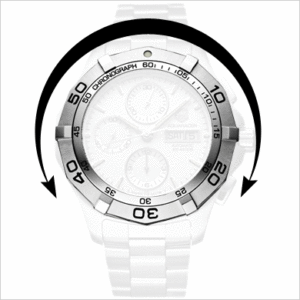
First thing you need to realise, is while the bezel is versatile, it’s not exactly smart. All it does is track how much time has passed, and even then only up to an hour. You could be looking at your watch for the whole hour, and STILL empty out your tank, because what matters most is your submersible pressure gauge. Don’t know what that is? I don’t blame you, I didn’t either. Basically, it tells you how much air pressure is left in your scuba tank. And if you breathe too quickly, it may not take an hour to empty it out!
The other thing about this myth is the word Oxygen. See, if you’re a diver, you know that you actually breathe compressed air. This has, maybe 20% oxygen, over 75% nitrogen, as well as some other gasses. That’s because it’s impossible to breathe pure oxygen when you’re even 6m under the water. So unless watch companies figure out how to fit a pressure gauge inside the watch face, you can use the bezel to time your dive, or decompression stops, but you can’t keep track of how much AIR you have left.
Moving right along, the next myth is that a bright dial helps enhance visibility underwater.
I’m not ashamed to tell you, I used to believe it as well! Now, this myth is actually the fault of one watch brand - Doxa. See, back in 1969, the designer of the Doxa Sub 300 decided to see which dial colour stayed visible in a murky lake.
While orange won that challenge, the main problem is the use of a lake, since they’re nowhere near as deep as the seas divers jump into. When you’re in the water, it ends up absorbing the colours, the further down you go. Red and orange are the first to go, at 4.6M. After that, the dial will just look grey.
While the colours that last longest are blue and yellow, that’s not even the point. The most legible underwater watches are the ones with the most contrast between the face and the hands. If you’ve got a watch with a black dial and really thick white hands (such as this one), you’ll be able to see the time pretty much throughout your whole dive!
Moving on: A vented strap ensures your wrist can breathe. If you’re not sure what a vented strap is, have a look at our Citizen and Seiko watches.
Notice the rubber straps? That’s probably one of the smartest innovations in watch history and, ironically, they have nothing to do with the watch itself.
See, when you dive, your wet suit tightens to your body. But if you wear a normal watch that’s got either a cloth strap, or normal rubber straps, they don’t take up the slack. The band loosens, and it sort of flops on your wrist (making it easy to lose).
Vented (also known as accordion) rubber straps, that are found on Citizen and Seiko’s diving watches (and actually first created by Seiko), take up the slack once the wetsuit tightens, and so the watch stays tight. Now, remember that’s VENTED straps, which are quite different from the Punching Pattern Casio Series. THOSE have holes designed to let your wrist breathe.
Next up: A helium release valve will allow you to dive deeper. Right, this one actually inspired a lot of research, since I didn’t even know dive watches HAD a helium release valve! Here it is below.
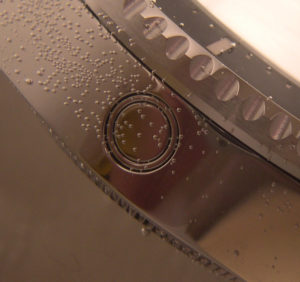
Now, this valve doesn’t actually come with all diving watches, in fact, they’re extremely rare. They started up in the late 1960s, when divers wearing Rolex watches found that the crystals on their timepiece kept exploding due to helium buildup. So, that seemed like a simple solution to just add a release valve that had a good rubber gasket and a strong spring. That’s LITERALLY all a Helium Release Valve is.
The valve itself was meant to relieve pressure but only in DRY environments. If you’re in an underwater habitat, then yes you’ll find it useful. But if you’re a scuba diver? Don’t bother wasting your money just because a function sounds cool. It won’t help you dive deeper.
OK this next one is really useful! The myth is that 100M of water resistance isn’t enough for diving. Let’s face it, most people asking questions about water resistance want the ones that have 200m. Casio even has a chart on its site stating that only 200m Diving watches can
be used when Scuba Diving.
This myth was disproved by an organization called PADI (Professional Association of Diving Instructors). They explained that if you have a basic open water certificate, you should only dive down to 20M. Advanced certificates go up to 40M, but that’s still nowhere near 100 to 200m. You simply won’t need to dive that far, so a 100m water resistance watch will easily do. Heck, it’ll probably be slimmer and more light weight!
Here’s a fun one! If you flail your arms underwater, you add to the water pressure on the watch! That one actually made me laugh because, if you think about it, according to this myth you need to keep your arms completely still when diving... Kind of hard to get back up afterwards isn’t it?
The truth is, no matter how much you swing your arms underwater, the pressure on the machinery inside won’t increase. Hell, according some research, your arms would need to move at 51K/PH... If you could go that quickly, you should be in the Olympics instead of wasting your talents at diving!
Finally, the biggest myth of all... Divers wear diving watches. Now, if you only look at press releases, and photos accompanying promotions, you’d think this was true. That a diving watch is a must for divers.
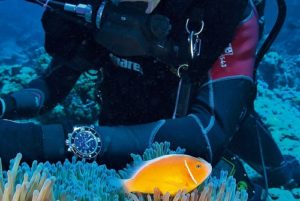
Hell, before I started my research, I thought it was a no-brainer myself. Well, I was wrong.
See the truth is, if you go on to a diving boat with a lot of professional divers, 99% of the time, you won’t see them wearing a watch. Instead, they’ll be wearing a diving computer. In the
1990s, when diving watches evolved into diving computers, those were, and still are, considered state of the art. They can calculate your depth, the amount of nitrogen you’re receiving, and the number of decompression stops you’ve made. You didn’t need to carry around laminated tables or do the math in your head (which is REALLY hard under water!
Now, that being said, a dive watch is still useful, since it can be used as a backup, in case your computer stops working (if you’ve had Microsoft Windows, you know just how often that can happen).
Also, the watch is good for timing things a dive computer isn’t. Such as swim distances while navigating, safety stops, and that’s all below the surface. Spinning the rotating bezel can help you keep tracks of boat rides, and the intervals where you went up to the surface for a while.
So, there you have it. Diving watches are pretty useful, but don’t get caught up in the myths.
Until Next Time - Jimmy B.






